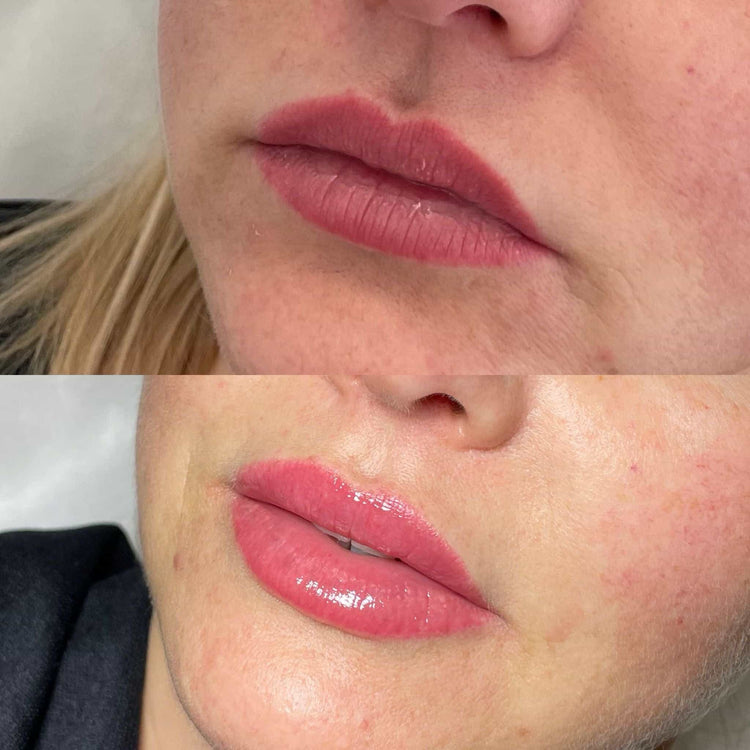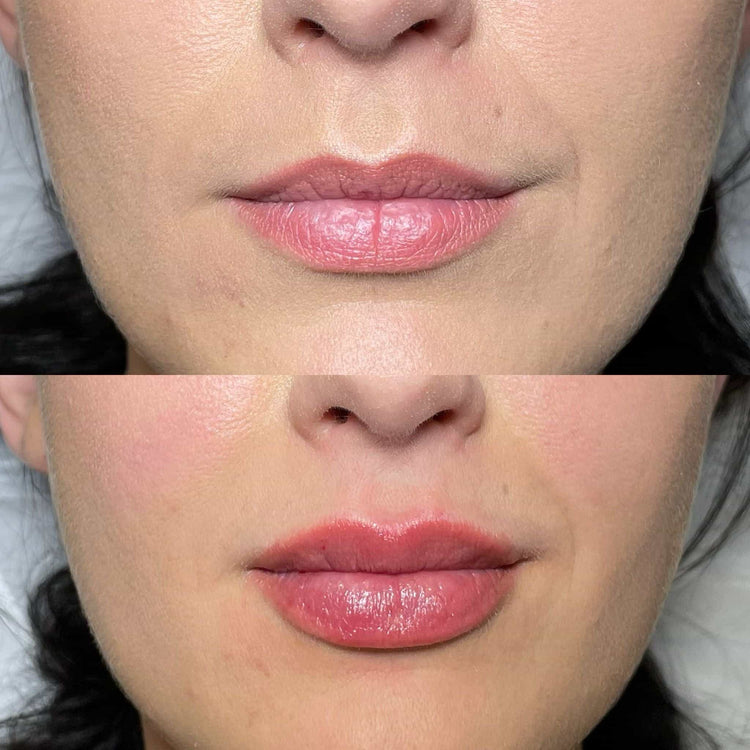Types of Lip Filler Fillers
Lip fillers have become increasingly popular, offering individuals the ability to enhance their lip shape and volume. These fillers are typically made from hyaluronic acid, a naturally occurring substance in the body that attracts and holds water. Hyaluronic acid-based fillers provide temporary results that can last for several months, but there are also permanent filler options available. Understanding the different types of lip fillers and their longevity is essential for making informed decisions about lip augmentation.
Hyaluronic Acid Fillers
Hyaluronic acid (HA) is the most common ingredient in lip fillers. These fillers work by adding volume to the lips, plumping them up and enhancing their shape. HA is a naturally occurring substance in the body that helps to keep skin hydrated and supple.
Because HA is biocompatible and biodegradable, it is broken down by the body over time. This means HA-based lip fillers are temporary and typically last for 6 to 18 months.
Other types of lip fillers are available that offer longer-lasting results, including permanent options.
Semi-Permanent Fillers
Other types of lip fillers are available that use different materials than hyaluronic acid, offering longer-lasting results, including permanent options. One type is polymethyl methacrylate (PMMA), a synthetic gel that is injected into the lips to provide volume and lift. PMMA fillers are considered semi-permanent, meaning they can last for several years.
It’s important to note that permanent lip fillers carry risks and potential complications, such as uneven results, migration of the filler, and difficulty removing it if desired.
How Long Do Lip Fillers Last?
The duration of lip filler results varies depending on the type of filler used. Hyaluronic acid (HA) fillers, the most common type, are temporary, typically lasting 6 to 18 months before needing replenishment.
Factors Affecting Longevity
Several factors can influence the longevity of lip fillers. The type of filler used is a primary factor, with hyaluronic acid-based fillers being temporary and lasting 6 to 18 months on average.
Individual metabolism also plays a role, as some people may metabolize fillers faster than others.
Lifestyle factors such as sun exposure, smoking, and facial expressions can also affect the duration of results. Sun damage can break down the filler, while repeated facial movements can cause it to disperse more quickly.
The skill of the injector is another important factor. Careful placement and technique can help ensure longer-lasting results.
Risks and Complications of Permanent Fillers
Permanent lip fillers offer a potentially long-lasting solution for enhancing lip shape and volume, but they come with inherent risks and complications. Unlike temporary fillers that are gradually broken down by the body, permanent fillers remain in place indefinitely. This permanence can make it challenging to correct any unwanted outcomes or adjust the results over time.
Allergic Reactions
Permanent lip fillers carry a number of risks and potential complications. One concern is the possibility of uneven results, where the filler may not be distributed evenly, leading to an asymmetrical appearance. Another risk is filler migration, where the filler moves from its initial injection site to another area of the face, potentially causing lumps or distortions.

Due to their permanent nature, removing permanent lip fillers can be difficult and may require multiple procedures. Additionally, allergic reactions are a possibility with any type of filler, but they can be more challenging to manage with permanent fillers since removal is not straightforward. It’s crucial to consult with a qualified and experienced injector to thoroughly discuss the risks and benefits before making a decision about permanent lip fillers.
Migration
Permanent lip fillers present several risks and complications that should be carefully considered. Uneven results are a common concern, where the filler may not distribute evenly, leading to an asymmetrical appearance. Filler migration is another risk, where the injected material moves from its original location, potentially causing lumps or distortion in other areas of the face.
Due to their permanent nature, removing permanent lip fillers can be challenging and may require multiple procedures. Allergic reactions are a possibility with any type of filler, but they can be more difficult to manage with permanent fillers because removal is not straightforward.
Infection
Infection is one of the potential risks associated with permanent fillers.
Any procedure that involves injecting substances into the body carries a risk of infection. If proper sterilization techniques are not followed during the procedure, bacteria could be introduced into the injection site.
Signs of infection can include redness, swelling, pain, warmth, and pus drainage around the injection site.
It’s important to choose a qualified and experienced injector who practices in a sterile environment to minimize the risk of infection.
Alternatives to Permanent Lip Fillers
For those seeking long-lasting lip enhancement, permanent lip fillers present an alternative to temporary hyaluronic acid fillers. Unlike temporary fillers that gradually break down over time, permanent options offer lasting volume and shape changes. However, it’s crucial to carefully weigh the potential risks and benefits before considering permanent lip fillers.
Non-Surgical Treatments
Alternatives to permanent lip fillers include a range of non-surgical treatments that provide temporary enhancements with fewer potential risks.
Lip plumping glosses and balms, while providing minimal volume, can offer an immediate subtle enhancement.
Semi-permanent options like micro-needling or collagen-stimulating therapies can induce collagen production, gradually increasing lip fullness over time.
Microneedling involves using tiny needles to create controlled punctures in the skin, triggering the body’s natural healing process and stimulating collagen growth.
Lip massage techniques can temporarily increase blood flow to the lips, creating a fuller appearance.
These alternatives provide less dramatic changes than permanent fillers but offer a safer and more reversible approach to lip enhancement.

Laser Lip Plumping
Alternatives to permanent lip fillers exist for those seeking less drastic or temporary enhancements. Laser lip plumping is one such option, utilizing controlled laser energy to stimulate collagen production in the lips. This can result in increased fullness and volume over time, providing a more natural-looking enhancement compared to immediate volumizing fillers.
Laser lip plumping offers several advantages over permanent fillers. It’s less invasive, with minimal downtime required for recovery. The results are gradual and subtle, allowing for more natural-looking enhancements. Moreover, laser treatments can be adjusted over time to achieve desired outcomes, providing greater control over the final appearance.
Choosing the Right Filler for You
Choosing the right lip filler depends on individual needs and desired outcome. Understanding the different types of fillers and their longevity is crucial for making an informed decision about lip augmentation.
Consultation with a Qualified Professional
Choosing the right lip filler requires careful consideration of your desired outcome, lifestyle factors, and potential risks.
Consulting with a qualified professional like a board-certified plastic surgeon or dermatologist is essential to determine the most suitable filler for your individual needs.
They will assess your facial structure, skin type, and medical history to recommend the appropriate type of filler, injection technique, and treatment plan.
A thorough consultation allows you to ask questions, discuss concerns, and understand the potential risks and benefits associated with different filler options.
This personalized approach ensures that you make an informed decision aligned with your goals and expectations.
Individual Needs and Goals
Choosing the right lip filler depends on individual needs and desired outcome. Factors like longevity, cost, and potential side effects should be considered.
Those seeking temporary enhancement may prefer hyaluronic acid fillers, which offer a natural look and are easily reversible if needed. For individuals desiring longer-lasting results, semi-permanent or permanent options like PMMA might be suitable. However, it’s crucial to weigh the risks associated with these longer-lasting fillers.
Consulting with a qualified injector is paramount for making an informed decision. They can assess your individual anatomy and goals to recommend the best filler type and technique, ensuring safe and satisfactory results.
Book your lip filler consultation today with Dr. Laura Geige at It’s Me & You Clinic

